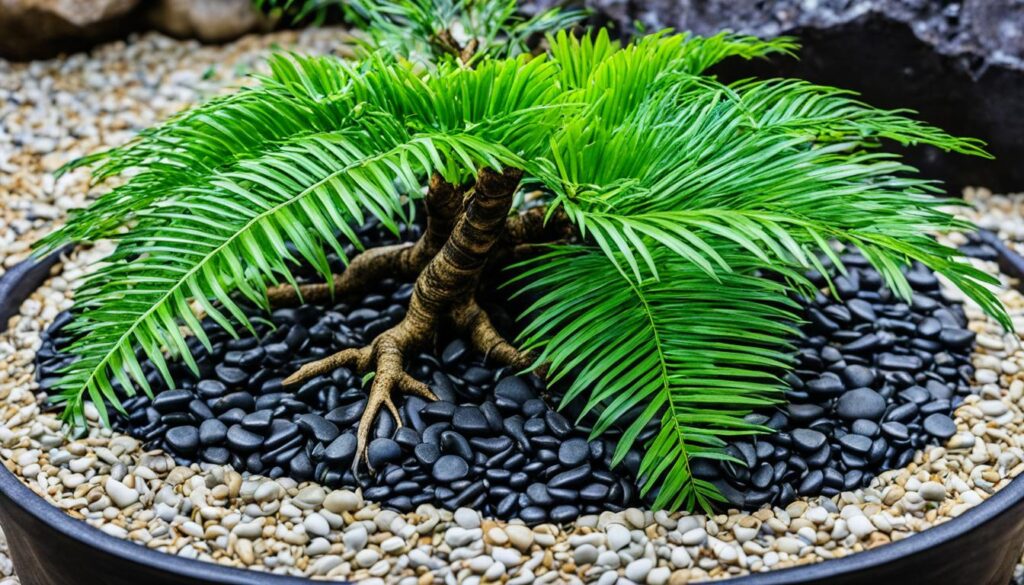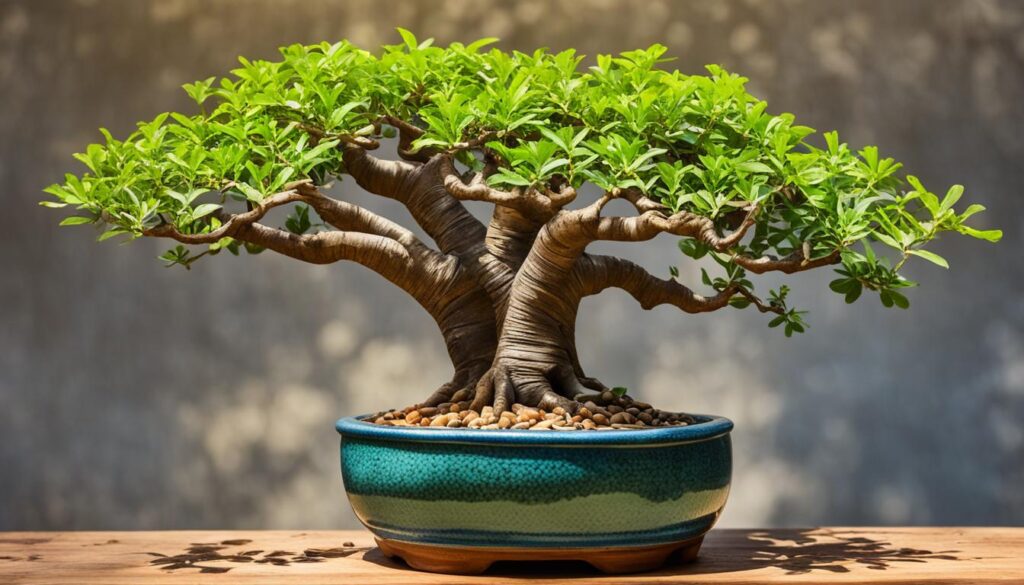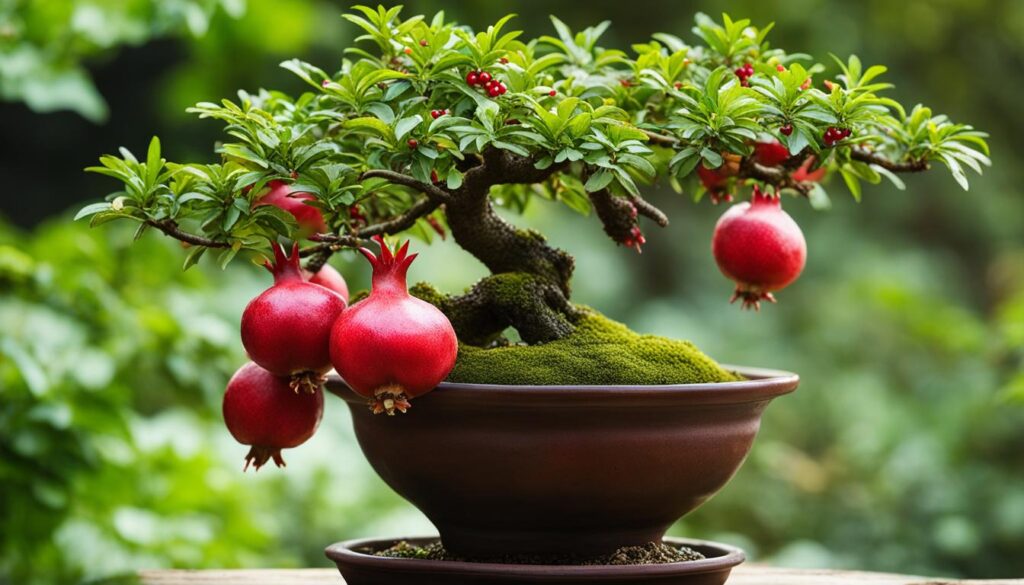If you want to add elegance and natural beauty to your home or garden, bonsai palm trees are a great choice. These miniature palm trees have a unique charm and need special care to thrive. In this guide, we’ll cover everything about growing and caring for palm tree bonsai.
Bonsai palm trees offer a distinct aesthetic appeal with their graceful fronds and tropical feel. They bring tranquility and sophistication to any space, making them popular among bonsai enthusiasts.
Growing bonsai palm trees requires understanding their unique features and specific care needs.
This guide will cover the fascination behind miniature palm bonsai, debunk common myths about palm tree bonsai, choose the right palm tree species, and provide ideal growing conditions. We will also discuss care fundamentals, including watering, fertilizer needs, and pruning. Lastly, we’ll explore styling, pruning techniques, and the process of repotting and transplanting your bonsai palm tree.
Understanding Bonsai Palm Trees
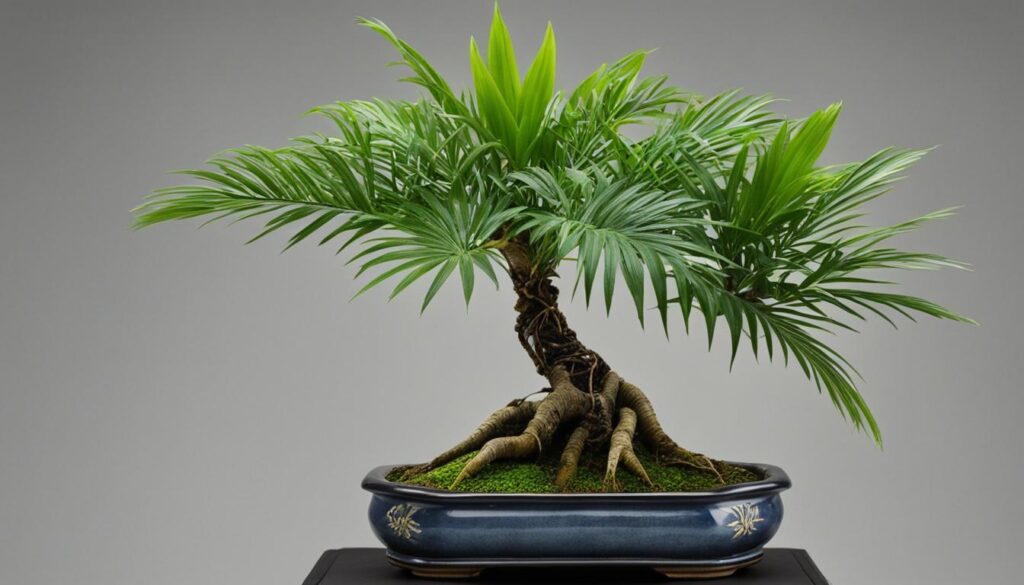
Bonsai enthusiasts may not initially consider palm trees, but they can be beautifully grown as bonsai. This section will explore the appeal of miniature palm bonsai, clarify misconceptions, and outline key features that make bonsai palm trees attractive.
The Unique Fascination with Miniature Palm Bonsai
Miniature palm bonsai trees have a unique charm. These small versions of tall palm trees impress with their proportions, detailed leaves, and artistic beauty. They provide a fresh perspective on palm trees, showcasing their beauty in a compact form that fits within bonsai artistry.
Decoding the Myth: Can You Bonsai a Palm Tree?
Bonsai usually involves woody plants, while palms grow differently, making traditional techniques challenging. However, some hobbyists grow miniature palms in containers for a similar effect. Results depend on the palm species and care provided.
Essential Features of Bonsai Palm Trees
Bonsai palm trees have distinct characteristics suitable for bonsai cultivation:
- Feathery fronds that enhance the beauty of the bonsai design.
- Unique trunks that add visual interest and appeal.
- Straight growth habits that align with desired bonsai shapes.
- Ability to withstand pruning, allowing for shaping and styling.
With the appeal of miniature palm bonsai and clarification of myths, we will now explore specific palm tree varieties ideal for bonsai cultivation.
Bonsai Palm Tree Varieties Suitable for Bonsai Cultivation
Two popular varieties of bonsai palm trees are the Ponytail Palm and the Sago Palm. Both offer unique features and enhance any bonsai collection.
Ponytail Palm: A Succulent Disguised as a Palm
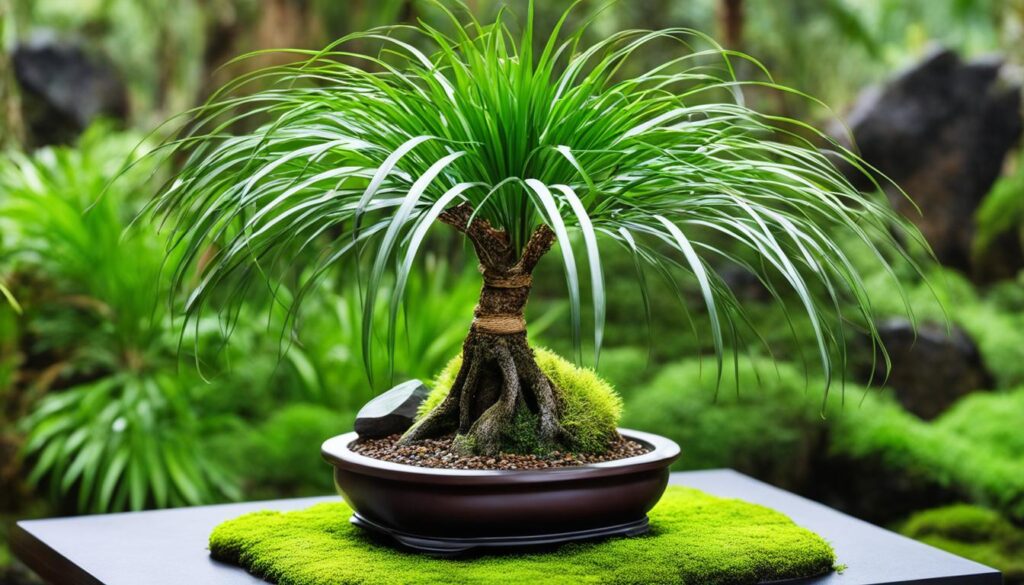
The Ponytail Palm, known scientifically as Beaucarnea recurvata, resembles a palm tree but is actually a succulent. Its appearance and ability to store water in its trunk make it a resilient and low-maintenance choice.
The Ponytail Palm features a bulbous base that stores water, allowing it to endure drought. The long, arching leaves create an elegant display. Pruning and styling can enhance its beauty and highlight its natural form.
To keep the Ponytail Palm bonsai healthy, provide well-draining soil, moderate sunlight, and infrequent watering. This variety prefers warm and dry environments and suits indoor bonsai cultivation.
Sago Palm Bonsai: A Prehistoric Touch to Modern Bonsai
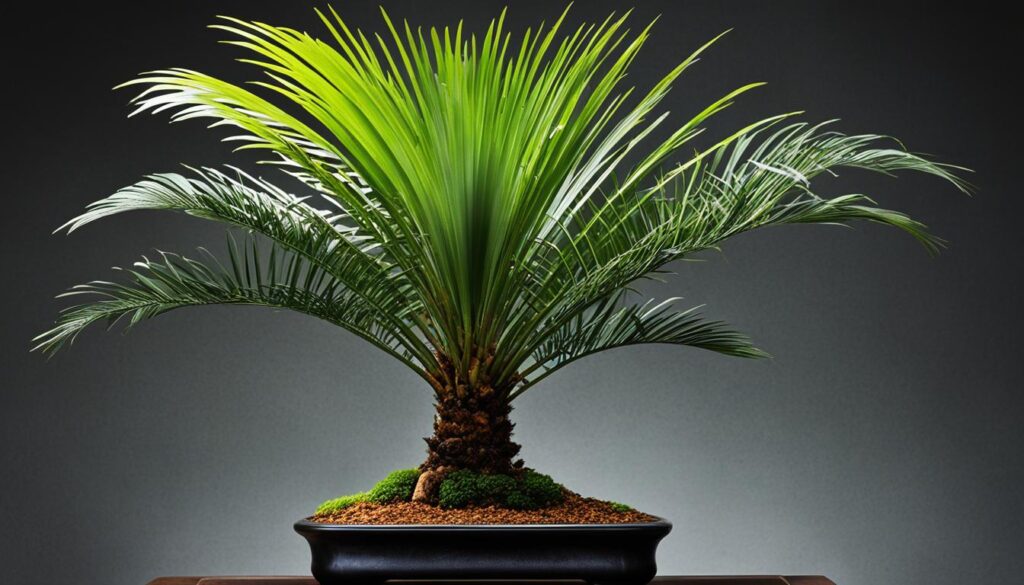
The Sago Palm, scientifically known as Cycas revoluta, is a captivating bonsai palm that adds a prehistoric look to collections. Despite its name, it is not a true palm but a member of cycads. Its appearance, with fern-like leaves, attracts bonsai enthusiasts.
Sago Palm bonsai have textured trunks with fronds that grow in a circular pattern. This feature creates a striking display, especially when styled. Its slow growth allows for precise shaping techniques to achieve a bonsai masterpiece.
For optimal growth, the Sago Palm needs well-draining soil and bright indirect sunlight. It thrives in warm temperatures but can adapt to cooler conditions. Protect the Sago Palm bonsai from frost and extreme temperatures.
| Bonsai Palm Variety | Scientific Name | Characteristics | Care Requirements |
|---|---|---|---|
| Ponytail Palm | Beaucarnea recurvata | – Succulent resembling a palm – Bulbous base for water storage – Long, arching leaves – Pruning to enhance natural form | – Well-draining soil – Moderate sunlight – Infrequent watering – Warm and dry environment |
| Sago Palm | Cycas revoluta | – Palm-like with fern-like leaves – Textured trunk – Circular frond growth – Shapable trunk | – Well-draining soil mix – Bright indirect sunlight – Protection from frost and extreme temperatures |
Now, let’s discuss how to select the right palm tree species for bonsai.
Selecting the Right Palm Tree Species for Bonsai
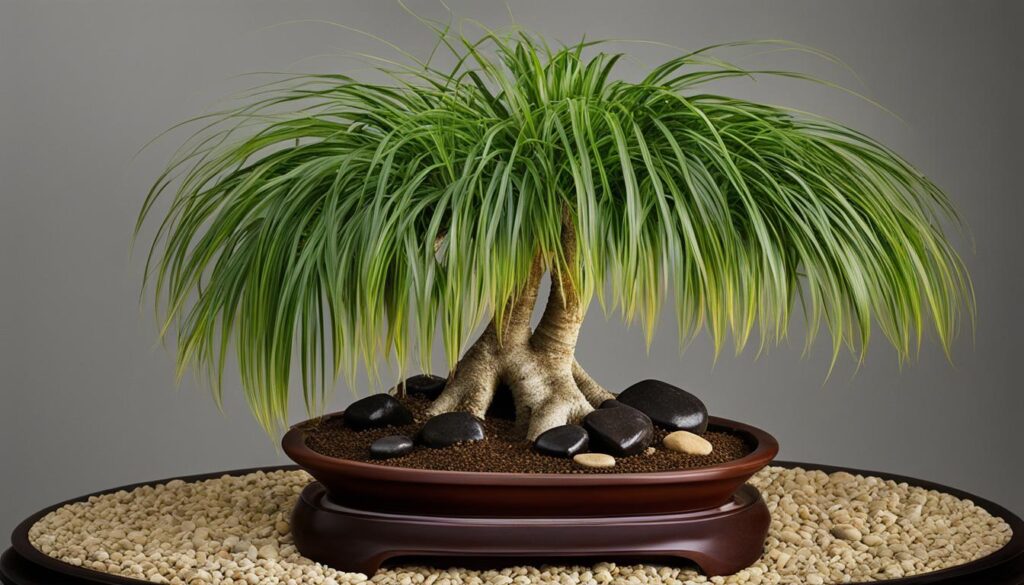
Selecting the right palm tree species is crucial for creating a stunning bonsai palm tree. Each species has unique traits that contribute to the beauty of your bonsai. We will explore two popular palm tree species: the ponytail palm and the sago palm.
Characteristics of the Ponytail Palm for Bonsai
The ponytail palm (Beaucarnea recurvata) is known for its distinctive trunk and long, slender leaves. This species is native to Mexico and is popular among bonsai enthusiasts. Its unique look adds elegance to any collection.
The ponytail palm thrives in various conditions. It tolerates bright sunlight and low light, making it a versatile choice. Its slow growth rate allows for manageable size and shape.
Adapting the Sago Palm to the Bonsai Art Form
The sago palm (Cycas revoluta) can also be adapted to bonsai. Native to Japan, this palm features dark green, feather-like leaves and a sturdy trunk. Its timeless beauty and adaptability make it a great choice for bonsai lovers.
When adapting the sago palm, consider its care needs. This species prefers bright, indirect sunlight and well-draining soil. Regular watering keeps the soil moist, but avoid over-saturation. Occasional fertilization ensures optimal growth.
By selecting the right palm tree species for your bonsai, like the ponytail palm and sago palm, you can create unique and captivating bonsai trees.
Ideal Conditions for Growing Bonsai Palm Trees
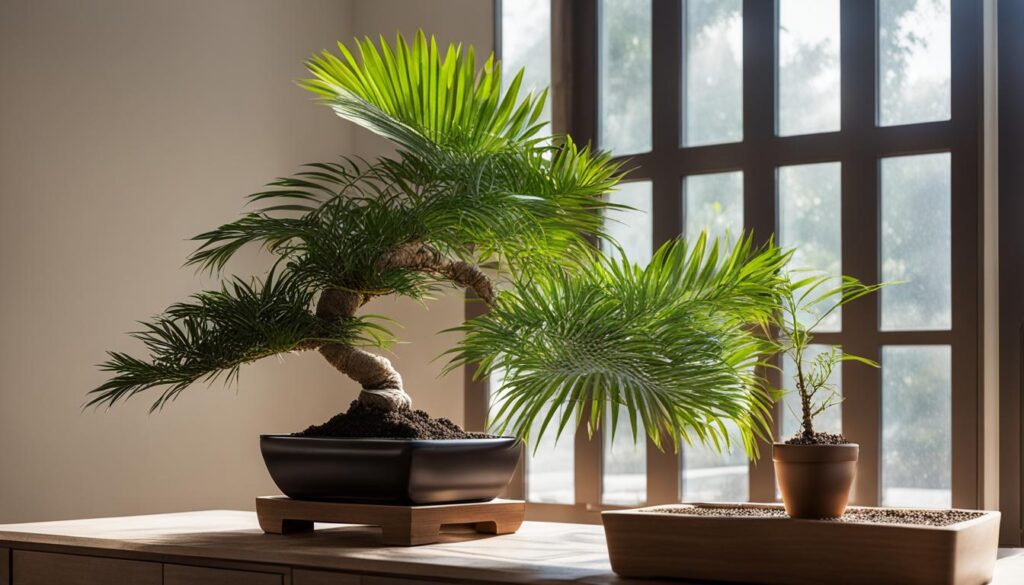
Creating the right environment is key to your bonsai palm trees’ success. Understanding the ideal conditions they require is important for their health and growth. Let’s explore the key factors for optimal growth of palm tree bonsai.
Lighting Requirements
Proper lighting is essential for photosynthesis, which is vital for your bonsai palm trees. Most palm species thrive in bright, indirect sunlight.
Place your bonsai palm tree in a spot that receives at least 4-6 hours of bright, filtered sunlight daily. If you grow your palm indoors, consider using artificial grow lights to supplement natural light.
Temperature Preferences
Bonsai palm trees prefer warm climates. They thrive in temperatures from 65°F to 85°F (18°C to 29°C) during the day and 55°F to 65°F (13°C to 18°C) at night.
Protect your bonsai palm tree from extreme temperature changes and frost. In colder climates, bring your palm indoors during winter or provide insulation to prevent damage.
Humidity Levels
Bonsai palm trees thrive in high humidity. To create ideal humidity, place a humidity tray filled with water near your palm tree bonsai or use a humidifier to maintain a humidity level of around 50% to 70%.
Pro Tip: Mist the leaves of your bonsai palm tree regularly with a spray bottle to increase humidity and prevent drying.
| Lighting Requirements | Temperature Preferences | Humidity Levels |
|---|---|---|
| Bright, indirect sunlight for 4-6 hours daily | Daytime: 65°F to 85°F (18°C to 29°C) Nighttime: 55°F to 65°F (13°C to 18°C) | Humidity level: 50% to 70% |
By providing the right conditions of lighting, temperature, and humidity for your bonsai palm trees, you can promote their growth and health. Regularly monitor and adjust these factors for a thriving environment.
Bonsai Palm Tree Care Fundamentals
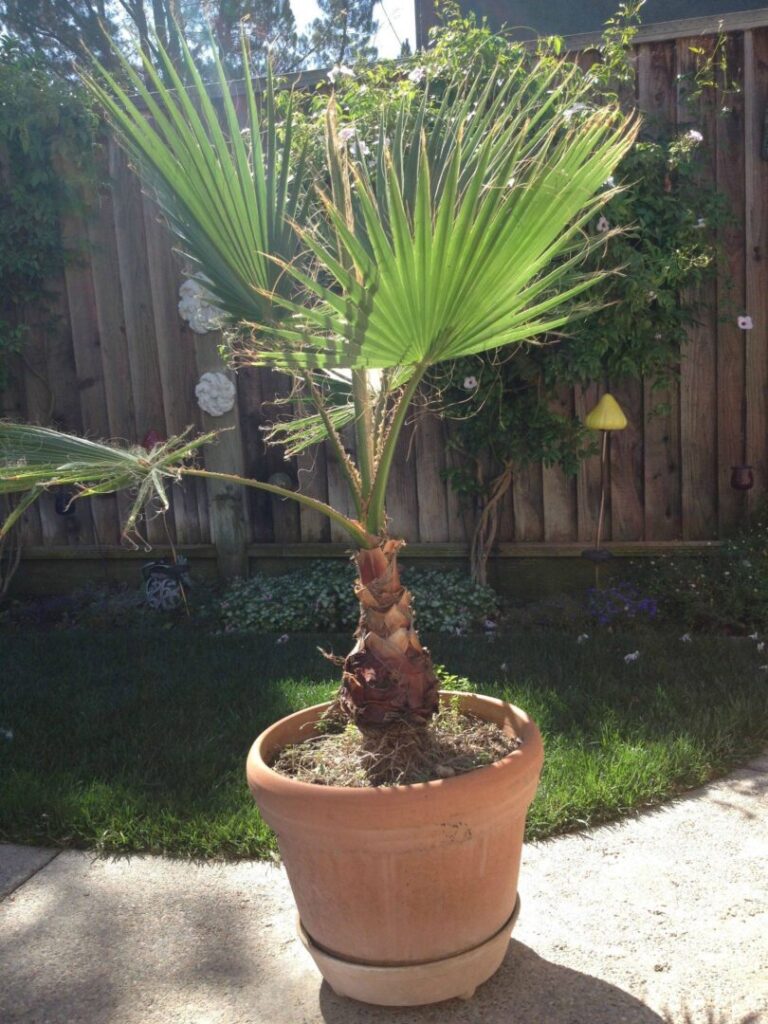
Proper care is vital for your bonsai palm tree’s health. This section covers essential practices for maintaining a thriving palm tree bonsai, including watering, feeding, pruning, and avoiding overwatering.
Watering Bonsai Palm Trees: How Much and How Often
Watering is critical in bonsai palm tree care. Balance hydration with avoiding overwatering, which can lead to root rot. Water your bonsai palm tree when the top inch of soil feels slightly dry. Use a watering can or gentle spray to moisten the entire root ball, ensuring no dry spots.
Feeding Your Bonsai: Fertilizer Preferences of Palm Species
Fertilizing your bonsai palm tree provides essential nutrients for growth. Different species have specific fertilizer needs, so choose one suitable for your palm tree bonsai. Use a balanced organic fertilizer with a ratio of 10-10-10 or a palm-specific fertilizer. Fertilize every two to three weeks during the growing season, following packaging instructions.
Pruning Techniques for Shaping a Bonsai Palm Tree
Pruning is important for shaping and maintaining your bonsai palm tree’s form. Remove dead, damaged, or overcrowded branches using sharp pruning shears for clean cuts. Selectively prune branches to create an open, balanced canopy. Regular pruning promotes growth and helps maintain the tree’s shape.
Avoiding Overwatering: Crucial for Palm Tree Health
Overwatering is a common mistake in bonsai palm tree care. Too much moisture causes root rot, harming the tree’s health. Ensure pots have drainage holes to allow excess water to escape. Monitor soil moisture and adjust watering frequency. It’s better to slightly underwater than to overwater your bonsai palm tree.
| Watering Guidelines | Fertilizer Preferences | Pruning Techniques | Avoiding Overwatering |
|---|---|---|---|
| Water when the top inch is slightly dry | Choose balanced organic fertilizer or palm-specific fertilizer | Remove dead branches, selectively prune for shape | Ensure proper drainage, monitor soil moisture, avoid excessive watering |
| Avoid overwatering to prevent root rot | Fertilize every two to three weeks during the growing season | Use sharp pruning shears for clean cuts | Slightly underwater rather than overwater |
Next, let’s explore styling and pruning bonsai palm trees.
Styling and Pruning Bonsai Palm Trees
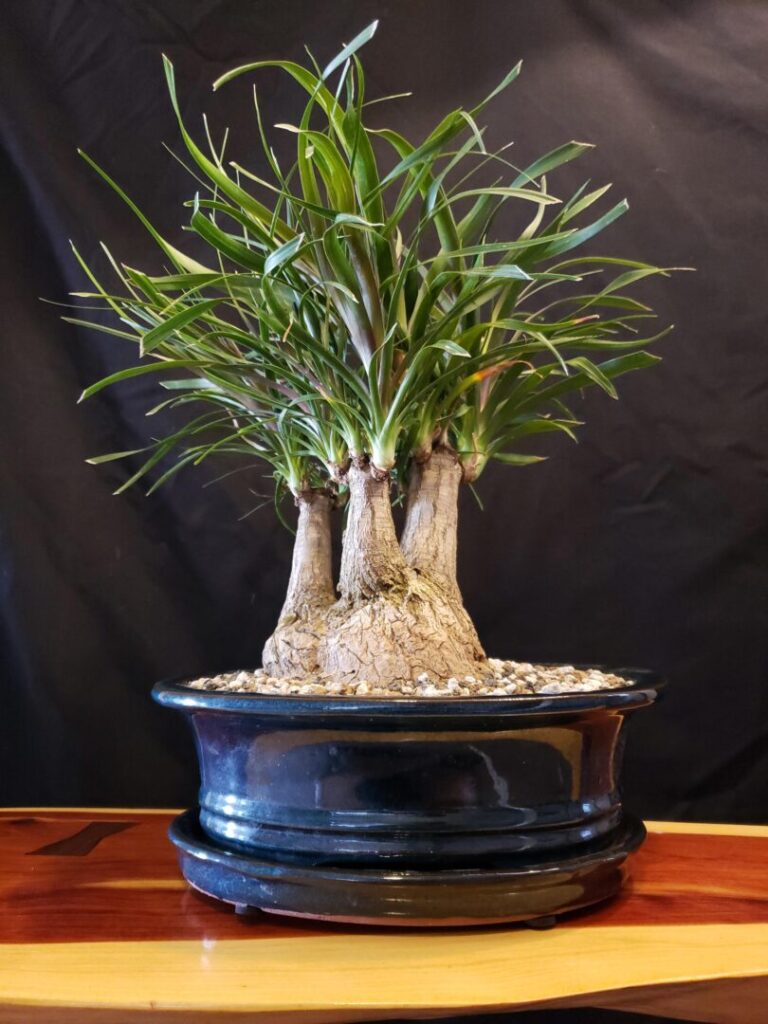
Styling and pruning are essential techniques for shaping your bonsai palm trees. These practices help create stunning bonsai that captivates with elegance.
Styling bonsai palm trees involves guiding growth to achieve a specific shape. Techniques include wiring, trimming, and manipulating branches and foliage. These methods create artistic compositions that showcase the palm tree’s natural beauty.
Pruning helps maintain the health and structure of the bonsai palm tree. It eliminates unwanted growth, allowing the tree to allocate resources efficiently. Pruning also maintains size and proportions, preventing overgrowth.
When pruning bonsai palm trees, consider the growth patterns, as species may require different approaches. Understanding each palm species helps you effectively shape and prune to enhance visual appeal.
“Styling and pruning are essential techniques that allow you to shape and maintain the desired aesthetic of bonsai palm trees.”
Whether you are a beginner or an experienced bonsai enthusiast, approach styling and pruning with care. Consider the tree’s natural growth patterns and aim for a harmonious balance between artistry and health.
By mastering styling and pruning, you can transform your palm tree bonsai into living art that showcases nature’s elegance in miniature form.
| Benefits of Styling and Pruning Bonsai Palm Trees | Techniques |
|---|---|
| Enhances the visual appeal of the bonsai palm tree | Wiring |
| Maintains the overall health and structure of the tree | Trimming |
| Creates a harmonious balance between artistry and nature | Branch manipulation |
Now let’s discuss repotting and transplanting your bonsai palm tree.
Repotting and Transplanting Your Bonsai Palm Tree

As your bonsai palm tree grows, it may outgrow its pot or need fresh soil. Repotting is essential for maintaining health and vitality. It allows for proper root growth and prevents overcrowding.
Repot your bonsai palm tree every two to three years or when roots become tightly packed. The best time for this is early spring when the tree begins active growth.
To repot your bonsai palm tree, gently remove it from its pot. Untangle the roots and trim any long or damaged ones. Prepare a new pot with fresh, well-draining soil. Center the tree in the pot, ensuring the nebari (root flare) is visible. Fill the pot with soil, compacting it gently around the roots. Water thoroughly and place it in a shaded area for a few weeks to recover.
Learn more about Bonsai Soil: Best Soil for Bonsai: Top Mixes Reviewed
Transplanting involves moving to a larger pot or planting in the ground. Do this sparingly and only when necessary. Retain as much of the root system as possible to minimize transplant shock. Follow the same steps as repotting, accommodating the larger size of the new container or the ground.
Unlock the Secrets to Growing a Stunning Flame Tree Bonsai That Will Leave Everyone in Awe! >>>

